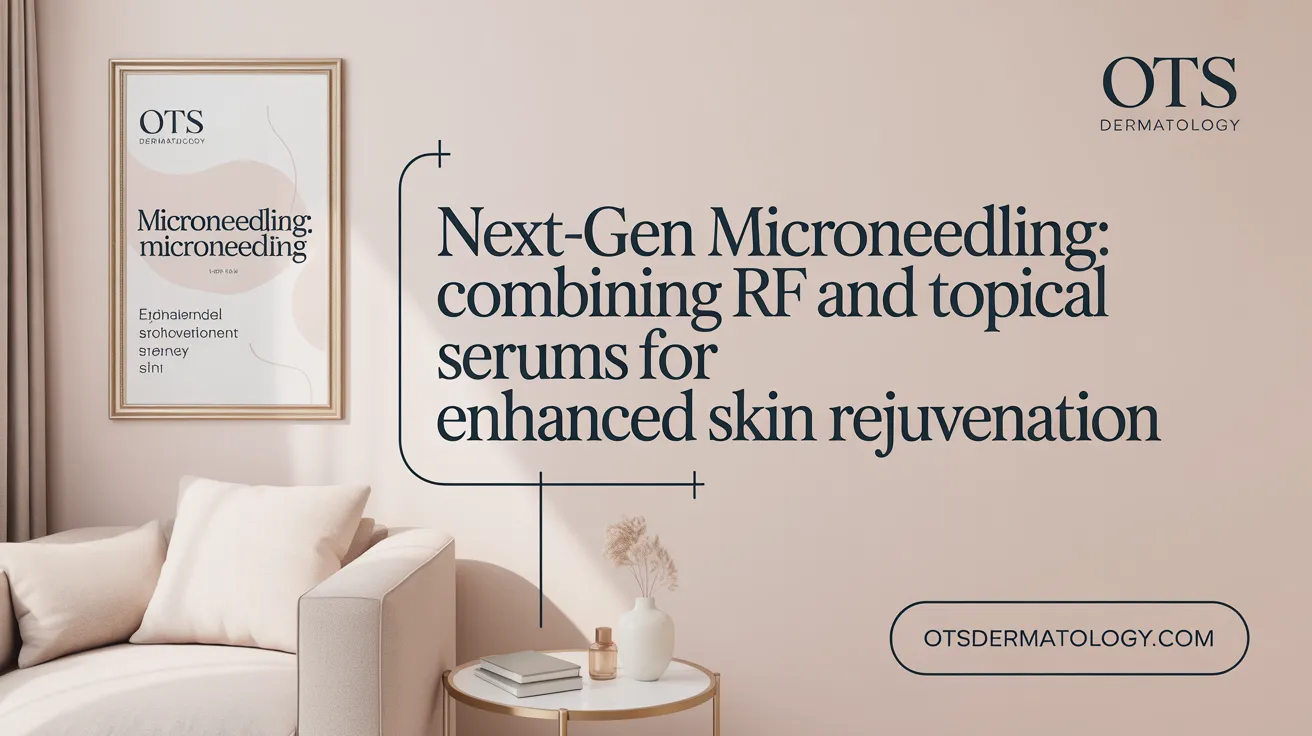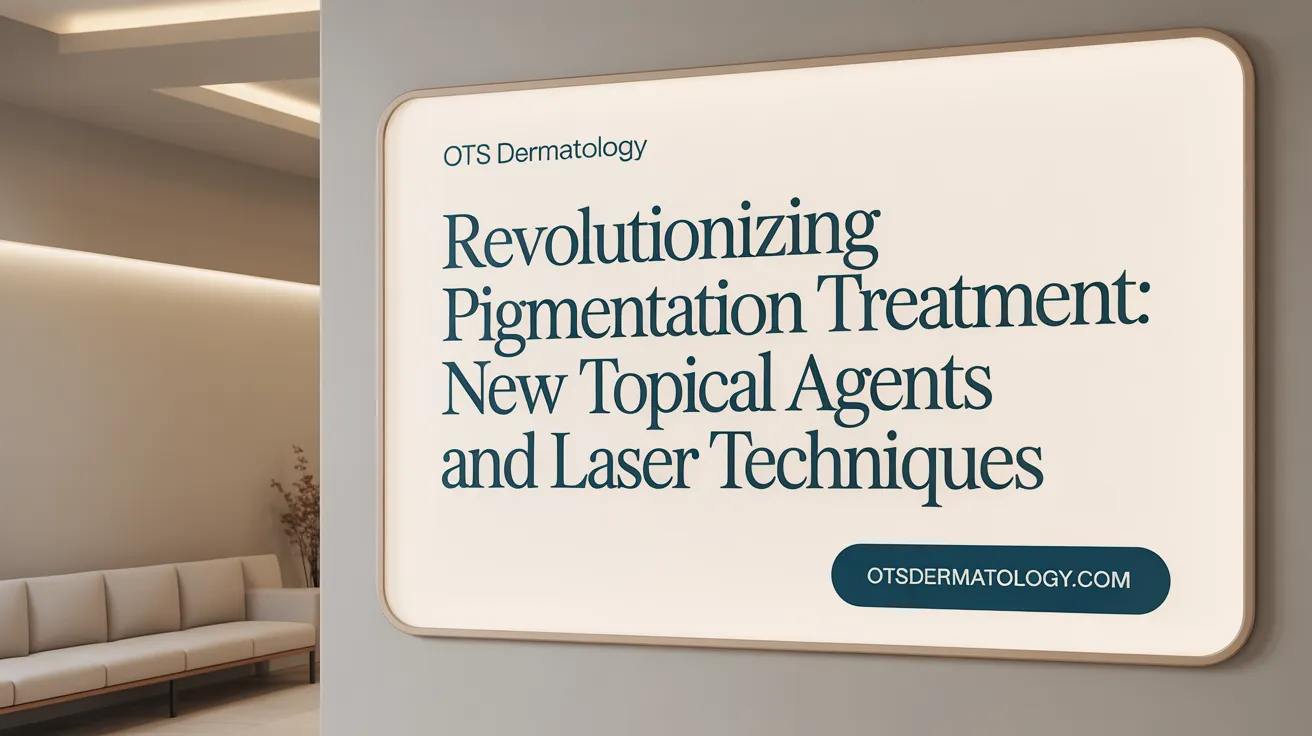Introduction to the Dynamic Field of Cosmetic Dermatology
Overview of Cosmetic Dermatology
Cosmetic dermatology focuses on enhancing the appearance of the skin through various treatments aimed at improving skin texture, tone, and overall aesthetics. It integrates both medical and cosmetic principles to provide personalized care that addresses concerns such as wrinkles, pigmentation, scars, and skin laxity.
Importance of Innovation in Skin Treatments
Innovation plays a vital role in cosmetic dermatology by introducing advanced technologies and methods that improve treatment efficacy and safety. New developments such as laser therapies, injectable fillers, and non-invasive procedures have transformed patient care, offering more natural-looking results with reduced downtime.
Emerging Trends in Aesthetic Medicine
Current trends include the use of biologic treatments like platelet-rich plasma (PRP), personalized skincare based on genetic profiling, and combination therapies that blend multiple modalities for optimized outcomes. There is also a growing emphasis on minimally invasive procedures that promote skin rejuvenation while maintaining patient comfort.
The field continues to evolve rapidly, driven by patient demand for effective yet gentle solutions that preserve youthful and healthy skin.
Advancements in Laser Technology for Skin Rejuvenation
What are the latest laser technologies used in cosmetic dermatology?
Recent innovations in cosmetic dermatology have introduced fractional picosecond and thulium lasers as cutting-edge options for skin rejuvenation. These new laser treatment devices offer highly targeted skin resurfacing with enhanced precision compared to traditional lasers.
The fractional picosecond laser, for example, delivers ultra-short pulses of energy that break down pigmentation and stimulate collagen production. This results in improved texture and reduced signs of aging such as wrinkles and fine lines, while minimizing damage to surrounding tissue and shortening recovery time.
Thulium lasers have also become popular for their effectiveness in treating pigmentation issues and promoting skin renewal. They specifically target areas of discoloration and uneven tone, making them ideal for reducing age spots and sun damage.
Benefits compared to traditional lasers
These advanced laser systems provide several benefits over traditional laser treatments. They typically cause less discomfort during the procedure, reduce post-treatment redness and swelling, and require fewer sessions to achieve noticeable results. Their precision lowers the risk of side effects and improves outcomes with faster healing, making them suitable for a wider range of skin types.
Applications in reducing wrinkles and pigmentation
Both fractional picosecond and thulium lasers are extensively used to address common skin concerns like wrinkles, fine lines, and pigmentation irregularities. By stimulating collagen remodeling, they enhance skin elasticity and firmness, while targeting pigment cells to even out skin tone.
In addition to these laser technologies, treatments such as platelet-rich plasma (PRP) therapy have also shown promising results in skin rejuvenation and hair restoration by harnessing the body's natural healing factors.
In summary, these latest laser technologies offer a safe and effective approach to skin rejuvenation, combining improved patient comfort with superior cosmetic outcomes.
Microneedling Enhancements: Combining Techniques for Superior Results

How is microneedling evolving in modern cosmetic dermatology?
Microneedling has advanced significantly with the integration of radiofrequency (RF) technology, a combination that elevates its effectiveness in skin rejuvenation treatments. While traditional microneedling creates controlled micro-injuries to stimulate collagen production, adding RF energy delivers heat deeper into the dermis. This synergy enhances collagen remodeling and regeneration, leading to improved skin texture, firmness, and reduction of fine lines.
Microneedling with radiofrequency (RF)
The fusion of microneedling and RF devices allows precise delivery of thermal energy directly into the skin's middle layers. This dual-action approach not only promotes stronger collagen induction but also tightens skin by stimulating elastin fibers. Patients often experience more noticeable and longer-lasting results compared to microneedling alone, including diminished acne scars, better skin tone, and enhanced elasticity.
Synergistic effects with topical serums
Applying active topical serums immediately after microneedling procedures takes advantage of the microchannels created by the needles. This enhanced permeability permits deeper and more efficient absorption of ingredients like vitamin C, hyaluronic acid, and peptides. When combined with RF energy, these serums can more effectively stimulate skin repair and hydration, resulting in a visibly smoother and more radiant complexion.
Impact on collagen stimulation and skin texture
Together, microneedling with RF and topical serums amplify collagen synthesis beyond what traditional methods achieve. The controlled injury and heat boost fibroblast activity, accelerating the skin’s natural healing processes. Enhanced collagen and elastin production contribute to thicker, stronger skin with improved texture, firmness, and overall youthful appearance. This multifaceted approach caters to varied skin concerns, making it a versatile option in modern cosmetic dermatology, complementing treatments such as platelet-rich plasma (PRP) therapy.
Personalized Injectable Treatments with Advanced Formulations

What innovations have been made in injectable treatments?
Injectable treatments have significantly evolved with the development of next-generation botulinum toxins and dermal fillers. These advanced formulations offer improvements in longevity, safety, and natural appearance, addressing individual patient needs more effectively than ever before.
Next-generation botulinum toxins and fillers
Recent innovations include refined botulinum toxin products that provide longer-lasting effects while maintaining natural facial expressions. These formulas have been engineered to reduce resistance and enhance precision, allowing tailored muscle relaxation that suits each patient’s unique anatomy.
Dermal fillers have also progressed with novel materials designed to integrate seamlessly into the skin’s tissue. These fillers are customizable according to the patient’s skin type, volume requirements, and aesthetic goals, resulting in smoother contours and more natural-looking rejuvenation.
Tailoring treatments to individual skin types and concerns
Personalization is central to modern injectable therapies. Practitioners now consider factors such as skin texture, elasticity, and specific aging concerns to select the most suitable formulations and injection techniques. This approach maximizes efficacy and patient satisfaction.
Longevity and safety improvements
Advanced botulinum toxins and fillers demonstrate enhanced durability, reducing the frequency of maintenance treatments. In addition, improvements in biocompatibility and formulation purity have significantly decreased adverse reactions, ensuring greater safety for a broad range of patients.
In summary, advancements in injectable treatment formulations allow dermatologists to offer more personalized, longer-lasting, and safer options that align with individual skin health and aesthetic goals. Additionally, treatments like platelet-rich plasma (PRP) therapy have also contributed to the expanding landscape of regenerative cosmetic procedures.
Harnessing Growth Factors and PRP for Skin Regeneration

How do growth factors and PRP enhance cosmetic skin treatments?
Platelet-rich plasma (PRP) therapy represents a significant advancement in cosmetic dermatology by utilizing the patient's own blood components to accelerate skin healing and rejuvenation. PRP is rich in growth factors that play an essential role in stimulating collagen production and promoting tissue repair.
These growth factors activate cellular processes responsible for skin regeneration, improving texture, elasticity, and tone. This natural stimulation helps reduce wrinkles and fine lines effectively with minimal side effects, making it a safe option for many patients.
PRP is frequently combined with other treatments, such as microneedling or laser therapy, to enhance overall outcomes. This synergistic approach intensifies collagen synthesis, resulting in more noticeable rejuvenation and longer-lasting effects.
Besides wrinkle reduction, growth factor-enriched therapies are also used for improving skin hydration, minimizing scars, and accelerating healing after cosmetic procedures. Harnessing these biological agents offers a personalized and innovative path to healthier, more youthful skin.
Non-Invasive Fat Reduction Technologies
What are the most effective non-invasive fat reduction techniques?
Cryolipolysis and High-Intensity Focused Ultrasound (HIFU) are currently the front runners in non-invasive fat reduction.
Cryolipolysis, often known by the popular brand name CoolSculpting, works by cooling fat cells to a temperature that triggers their natural death without damaging surrounding tissue. This technique targets stubborn fat pockets effectively, leading to improved body contour over several weeks as treated fat cells are processed and eliminated by the body.
HIFU uses focused ultrasound energy to heat and destroy fat cells beneath the skin’s surface. This method is praised for its precision and ability to tighten skin simultaneously, making it a versatile option for body contouring.
Effectiveness and patient comfort
Both cryolipolysis and HIFU offer noticeable results with minimal discomfort. Patients often report a mild cold sensation or warmth during treatment, but generally experience little to no downtime, allowing a quick return to daily activities.
Emerging trends in body contouring
The field of body contouring is rapidly evolving, with advances aiming at improved patient comfort, faster results, and enhanced skin tightening. Combinations of different technologies and personalized treatment plans are gaining traction to maximize outcomes. Additionally, research into new energy delivery mechanisms continues to push non-invasive fat reduction toward more comprehensive and accessible solutions for diverse patient needs. For example, platelet-rich plasma (PRP) therapy is being explored in related cosmetic applications for its regenerative potential.
Advances in Skin Brightening and Pigmentation Correction

What are the current innovations in treating pigmentation issues?
Recent developments in pigmentation treatment focus on combining advanced topical agents with procedural therapies to enhance skin brightening and correct discoloration.
New topical agents and combination therapies
Modern depigmenting creams incorporate ingredients like tranexamic acid, kojic acid, and novel peptides that inhibit melanin production more effectively than traditional hydroquinone. These agents are often used in combination, tailored to patient skin types and pigmentation patterns, thereby boosting outcomes while minimizing irritation.
Role of chemical peels and laser interplay
Chemical peels using acids such as glycolic, lactic, or salicylic acids serve to exfoliate the skin and accelerate cell turnover, which helps fade pigmented lesions. Laser therapies, including fractional lasers and intense pulsed light (IPL), complement topical and peel treatments by targeting deeper pigmentation layers with precision. The interplay of these modalities allows dermatologists to offer personalized regimens that maximize pigment reduction and improve overall skin texture safely.
Targeting melasma and hyperpigmentation
Melasma and hyperpigmentation are among the most challenging pigmentation issues, often requiring a multi-faceted approach. Recent protocols emphasize gentle yet effective control using combined topical agents with procedural techniques to reduce melanin synthesis and disperse existing pigment. This holistic strategy results in more durable improvement and patient satisfaction.
These integrated treatment options represent a significant advance in cosmetic dermatology, enabling safer, more effective management of complex pigmentation disorders. For complementary regenerative approaches, consider exploring platelet-rich plasma (PRP) therapy, which has also shown promise in skin rejuvenation and repair.
The Rise of Digital Dermatology and AI in Personalized Care
How is artificial intelligence shaping cosmetic dermatology?
Artificial intelligence (AI) is revolutionizing cosmetic dermatology by providing advanced skin analysis tools that utilize image recognition algorithms. These AI-driven tools can accurately assess skin conditions such as pigmentation, texture, and signs of aging. This level of precision allows dermatologists to develop highly personalized treatment plans tailored to the unique needs of each patient.
AI-driven skin analysis tools
Digital dermatology platforms equipped with AI analyze high-resolution skin images to detect subtle changes and potential concerns that may be missed by the naked eye. These tools provide objective measurements that help track progress over time and adjust therapies accordingly.
Integration with treatment planning
The integration of AI with treatment planning ensures that cosmetic procedures are optimized for individual skin types and conditions. By combining patient data and AI insights, dermatologists can recommend customized therapies, ranging from topical treatments to laser interventions, enhancing effectiveness while minimizing side effects.
Benefits for patient outcomes and customized therapies
By leveraging AI, patients receive more targeted and effective care, leading to improved satisfaction and outcomes. AI supports personalized approaches, ensuring treatments are adapted to evolving skin needs, resulting in better long-term skin health and aesthetic results, including advanced options such as platelet-rich plasma (PRP) therapy.
Sustainable and Biocompatible Ingredients in Cosmetic Formulations
What is the trend toward sustainable ingredients in cosmetic dermatology?
The cosmetic dermatology field is increasingly embracing sustainable and biocompatible ingredients. This trend reflects a dual focus on reducing environmental impact and enhancing skin safety. Manufacturers prioritize materials that minimize ecological footprints while maintaining gentle, non-irritating effects.
Natural and eco-friendly components derived from renewable sources are prominently used. Examples include plant-based oils, botanical extracts, and biodegradable preservatives. These ingredients align with consumer preferences for products that are both ethically crafted and supportive of long-term skin health.
Use of natural and biocompatible materials
Biocompatible materials are chosen for their compatibility with human skin, reducing adverse reactions. Their incorporation in formulations helps cater to sensitive skin types and lowers the risk of allergies or inflammation.
The use of natural ingredients also promotes biodegradability, which limits environmental harm from cosmetic product disposal. This approach supports a sustainable lifecycle—from ingredient sourcing to product degradation after use.
Impact on consumer preference and skin health
Consumers increasingly favor eco-conscious brands that demonstrate transparency and responsibility. Demand for products with sustainable ingredients has grown steadily, influencing market offerings.
In addition to ethical appeal, these ingredients support skin health by minimizing exposure to synthetic chemicals. This trend benefits individuals seeking safer alternatives without sacrificing efficacy or sensory qualities such as texture and scent. For example, innovative treatments like platelet-rich plasma (PRP) therapy are gaining interest as natural options that harness the body's own healing mechanisms.
Innovations in At-Home Cosmetic Devices
What are the latest developments in at-home cosmetic devices?
Recent advancements have introduced FDA-cleared at-home treatment devices that combine safety with clinically proven effectiveness. These include LED therapy tools designed to promote collagen production and reduce inflammation, as well as microneedling pens that enhance skin texture and firmness without invasive procedures.
How do at-home devices compare to clinical treatment options?
While clinical treatments often provide more dramatic results, at-home devices offer convenience and consistent use opportunities with fewer side effects. The FDA clearance ensures these products meet safety standards and deliver measurable benefits, making them suitable for patients seeking gradual skin improvement at home.
What are some popular devices for skin tightening and acne treatment?
Key devices gaining popularity include:
- LED Light Therapy Masks: Target acne-causing bacteria and stimulate skin repair using blue and red wavelengths.
- Microneedling Pens: Create controlled micro-injuries to trigger natural collagen remodeling, improving skin tightness and reducing fine lines.
- Radiofrequency Devices: Noninvasively heat the skin’s deeper layers to promote collagen and elastin production, enhancing firmness.
These innovations empower individuals to maintain skin health and address cosmetic concerns in a personalized, accessible way. For those interested in advanced options, exploring platelet-rich plasma (PRP) therapy may offer additional benefits in skin rejuvenation and hair restoration.
Future Directions: Integrating Genetics and Molecular Biology in Cosmetic Dermatology
What future advances are expected in cosmetic dermatology regarding genetics?
The future of cosmetic dermatology lies increasingly in the integration of genetics and molecular biology, promising treatments that are customized to individual genetic profiles. Emerging research on genetic and molecular markers is paving the way for highly personalized anti-aging and skin therapies. These advances will enable dermatologists to tailor interventions that optimize efficacy while minimizing adverse effects.
Personalized treatments will rely on detailed genetic profiling to understand each patient's unique skin characteristics and aging processes. With this information, molecular targets can be identified to develop therapies that specifically address genetic variations influencing skin elasticity, pigmentation, and resilience.
Molecular biology offers several promising targets for anti-aging therapies, such as pathways involved in collagen synthesis, oxidative stress response, and DNA repair. By focusing on these molecular mechanisms, new treatments can enhance skin rejuvenation at the cellular level.
The potential to revolutionize patient-specific care through these innovations is profound. Dermatologists will move beyond one-size-fits-all approaches, leveraging genetic insights to design customized skincare regimens and aesthetic procedures. This tailored approach ensures more predictable outcomes and improved patient satisfaction.
As research advances, the convergence of genetics and molecular biology in cosmetic dermatology represents a transformative shift towards precision medicine, fostering safer, more effective, and individualized skin care solutions, alongside advances such as platelet-rich plasma (PRP) therapy, which harness the body's natural healing mechanisms.
Embracing Innovation for Enhanced Skin Health and Aesthetics
Advancements Shaping Modern Dermatology
Recent years have witnessed remarkable innovations in dermatology, enhancing both skin health and aesthetic outcomes. Cutting-edge treatments now address a wider range of conditions with improved precision, minimizing recovery times and maximizing results. These advances include the use of laser therapies, injectable neuromodulators, and regenerative medicine approaches such as platelet-rich plasma.
Personalized Care: The Foundation of Effective Treatment
Personalization has become central to dermatologic care, recognizing that each patient's skin type, concerns, and goals are unique. By leveraging detailed assessments and tailored treatment plans, dermatologists can optimize therapeutic effects and patient satisfaction. This approach integrates medical history, genetic factors, and lifestyle to select interventions best suited for individual needs.
Navigating the Dynamic Cosmetic Dermatology Landscape
The future promises ongoing evolution driven by technological breakthroughs and scientific discovery. Emerging tools like artificial intelligence and advanced imaging enhance diagnostic accuracy and treatment customization. Combined with a holistic focus on skin health and well-being, these developments offer improved options for patients seeking both cosmetic enhancement and durable skin health.
